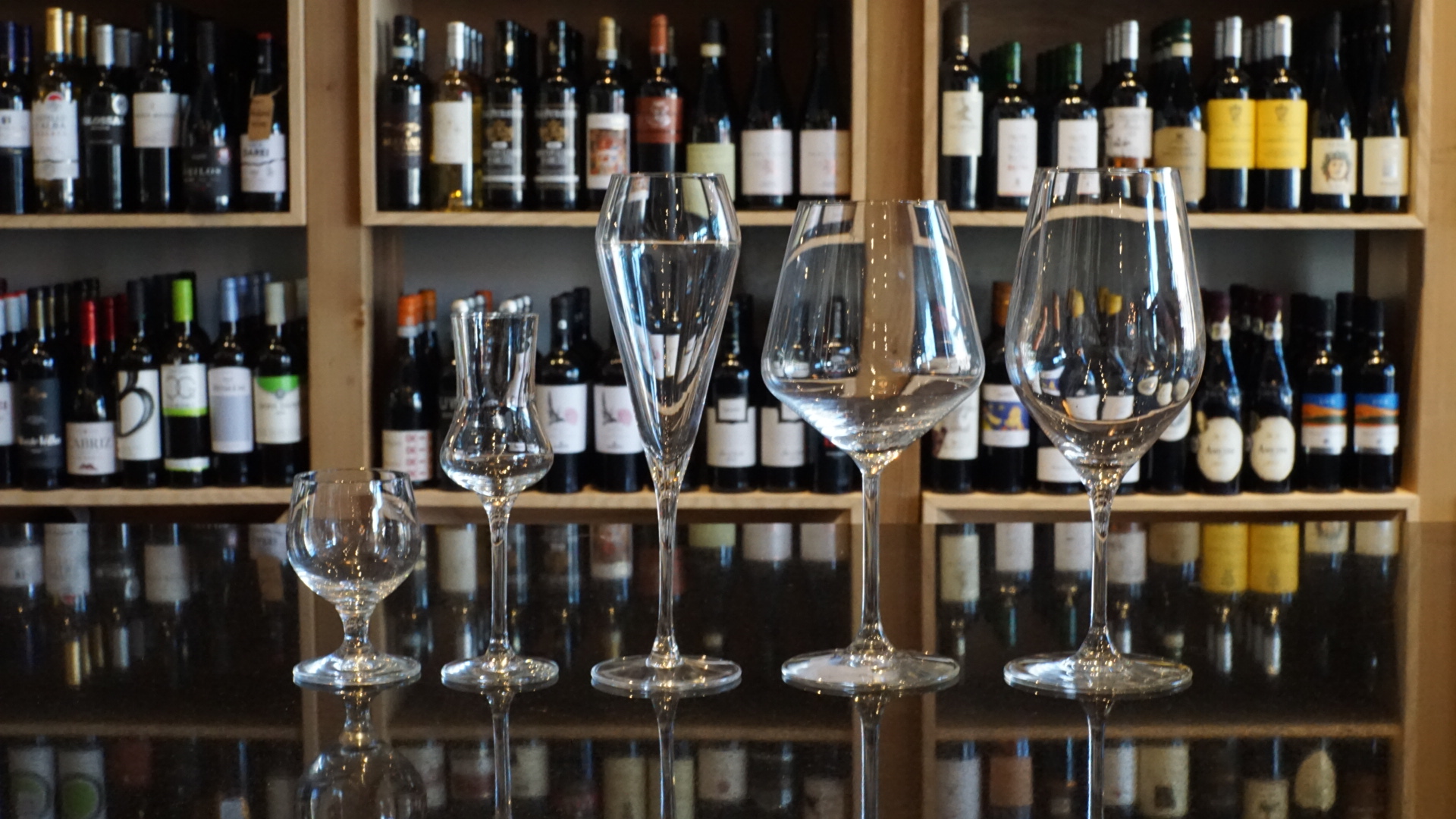The Importance of Glassware
Wine is a super complex thing that does something magically simple: it makes us happy and improves special moments. This means that sometimes we drink wine and we don’t care much about it’s subtleties. We drink it because it’s fun, and give it no more thought than that.
Other times, however, we want to bask in every one of a fine wine’s glorious details. For these occasions, you want the right glass. So for this post, we’ll explain the differences between different types of wine glass, and how they really do make a huge difference in how you perceive the wine inside them.
Why glassware matters
In a word: aromatics. The smell of a wine is often it’s most complicated and alluring attribute. Some wines’ aromas practically burst out of your glass, while others you have to coax out with vigorous swirling. Certain glasses have different shapes that account for this, often wildly changing the wine.
Some other benefits of great glassware include being perfectly clear, so you can get a truly good (and accurate) look at the wine, as well as being beautiful in their own right.
Common Types
Bordeaux Glasses
Easily the most common fine wine glass, Bordeaux glasses work best for wines like those that Bordeaux produces: big, complex, layered reds with ageing potential. They have a large bowl and a wide enough opening to allow you to get your whole nose into the glass. The large size also makes it easier to swirl the wine without risking it flying everywhere. Finally, since Bordeaux and Bordeaux style wines are generally comparatively high in alcohol, Bordeaux glasses are designed to account for this, thereby making high alcohol wines easier to smell. Alcohol has a numbing effect on the nose, so without a proper glass, high alcohol wines would smell muted.
Burgundy Glasses
Much less common than Bordeaux glasses, but worth the investment if you love pinot noir. This glass has a flatter bottom, out-turned lip, and a shallower bowl.
The flatter bottom in relation to the shallower bowl allows you to get your nose closer to the wine, and to give the wine more surface area in contact with oxygen as the amount of wine decreases with each sip. This combination helps you discern the subtler aromas of pinot noir.
The outturned lip also causes the wine to move differently as it passes over your lip. Basically, It forces you to slurp a little bit. This activates more of the wines flavor, again helping you discern more subtle characteristics you may otherwise miss with other glassware.
Champagne Flutes
Champagne flutes are as much about style and aesthetics are they are about usefulness. It’s hard to deny how beautiful the bubbles look in the slim, elegant glasses.
The shape does have some advantages beyond looks, though. For one, it’s hard to swirl a champagne flute. This keeps you from inadvertently swirling and loosing the bubbles. Also, the slight inward curl at the top of the glass helps capture the aromas that the bubbles help to release. Some flutes do come without this curl - avoid them, even the really pretty ones.
Port Glasses / Dessert Wine Glasses
This is the last type of glass that we will discuss here. While there are many others, unless you’re goal is to get full blown fancy, these four are all you’ll ever need (and really, you could just get away with Bordeaux glasses if you want).
These glasses come in many styles, but in general they are simply smaller so that 1) you remember to pour less, and savor the wine and 2) that when you swirl, you jettison much of the alcohol, making it easier to appreciate the aromas, as mentioned above. Like all of the glasses mentioned, they have a stem, albeit a smaller one. The stem is a very important part of all of these wine glasses because it keeps you warm hand off the bowl where the liquid is.
There you have it, a quick guide to glassware. We hope you’ll give a little more thought to what you put your wine in in some instances: you don’t need to think this hard about glassware all the time. Every once in a while, though, it’s good to fully appreciate a fine wine.

